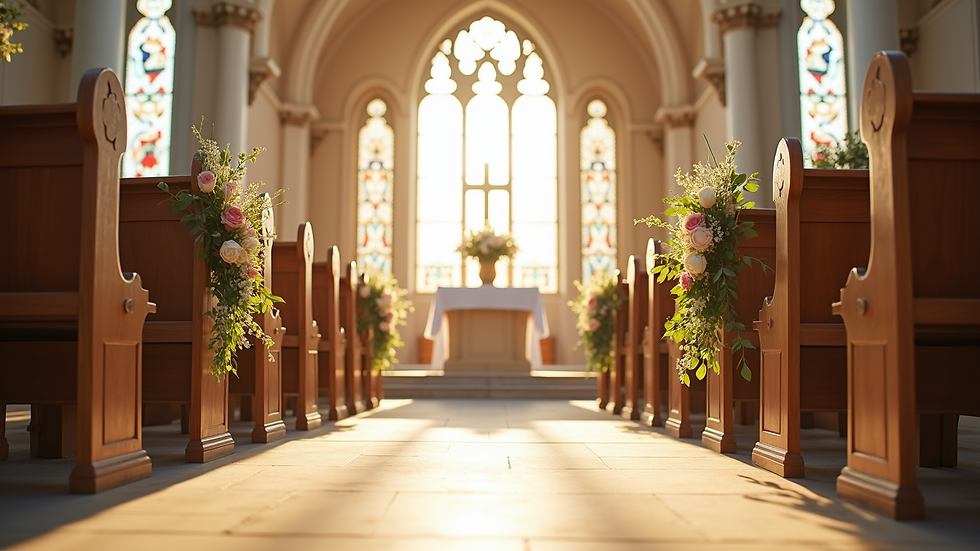Discover Unique Indian Wedding Traditions
- Nameless House
- Oct 3
- 4 min read
Indian weddings are a vibrant tapestry of colors, rituals, and emotions. Each ceremony is a beautiful blend of age-old traditions and regional variations that make every wedding unique. Exploring these customs offers a fascinating insight into the rich cultural heritage of India. This article delves into some of the most unique Indian wedding customs that continue to captivate hearts and minds.
Unique Indian Wedding Customs That Stand Out
Indian weddings are known for their grandeur and elaborate rituals. However, beyond the common ceremonies, there are several unique customs that vary from region to region, adding a special charm to the celebrations.
Haldi Ceremony: This pre-wedding ritual involves applying turmeric paste to the bride and groom. It is believed to purify and bless the couple. The bright yellow color symbolizes prosperity and fertility.
Joota Chupai: A playful tradition where the bride’s sisters and friends hide the groom’s shoes, demanding a ransom to return them. This fun custom adds laughter and bonding moments between the families.
Saat Phere (Seven Circles): The couple takes seven rounds around a sacred fire, each round symbolizing a vow. This ritual signifies their commitment to each other for life.
Baraat Procession: The groom arrives on a decorated horse or vehicle, accompanied by music and dancing. This lively procession is a spectacle of joy and celebration.
Vidaai: An emotional farewell where the bride leaves her parental home to start a new life with her husband. It symbolizes the beginning of a new chapter.
These customs are just a glimpse of the diverse practices that make Indian weddings so special. Each tradition carries deep meaning and reflects the values and beliefs of the community.

Exploring More Unique Indian Wedding Customs
Beyond the well-known rituals, many Indian weddings feature customs that are unique to specific regions or communities. These add layers of cultural richness and personal significance to the ceremonies.
Ghoomar Dance (Rajasthan): A traditional folk dance performed by women in colorful attire. It is a graceful and rhythmic dance that celebrates joy and femininity.
Mehndi Ceremony: The bride’s hands and feet are adorned with intricate henna designs. This ceremony is often accompanied by music, dance, and festive gatherings.
Kanyadaan: A sacred ritual where the bride’s parents give her away to the groom, symbolizing trust and responsibility.
Mangalsutra Tying: The groom ties a sacred necklace around the bride’s neck, signifying their marital bond.
Saptapadi: The couple takes seven steps together, each step representing a promise to support and cherish each other.
These customs highlight the diversity and depth of Indian wedding traditions. They also emphasize the importance of family, community, and spirituality in the union of two individuals.

What is the Indian Tradition After the Wedding?
After the wedding ceremony, several customs mark the beginning of the couple’s new life together. These post-wedding traditions are filled with symbolism and warmth.
Griha Pravesh: The bride’s first entry into her new home. She is welcomed with rituals that signify prosperity and happiness.
Reception: A celebration where family and friends gather to bless the couple and enjoy festivities.
Pag Phera: The bride returns to her parental home for a few days, symbolizing her continued bond with her family.
Satyanarayan Puja: A religious ceremony performed to seek blessings for a happy and prosperous married life.
First Meal Together: The couple shares their first meal as husband and wife, often prepared with special care and love.
These traditions help the couple transition smoothly into married life while strengthening family ties and community bonds.

Practical Tips for Incorporating Unique Customs in Modern Weddings
Incorporating unique Indian wedding customs into modern celebrations can make the event memorable and meaningful. Here are some practical tips:
Understand the Significance: Learn about the meaning behind each custom to appreciate its value.
Personalize the Rituals: Adapt traditions to fit your style and preferences while respecting their essence.
Involve Family and Friends: Encourage participation to create a sense of community and shared joy.
Plan Ahead: Coordinate with vendors and planners to ensure smooth execution of rituals.
Document the Moments: Hire a professional photographer to capture the unique customs and emotions.
By thoughtfully blending tradition with contemporary elements, couples can create a wedding that honors their heritage and reflects their personalities.
Embracing the Spirit of Indian Weddings
Indian weddings are more than just ceremonies - they are celebrations of love, culture, and family. The unique customs and rituals enrich the experience, making each wedding a story worth telling. Whether it is the vibrant dances, sacred vows, or heartfelt farewells, every moment is filled with meaning.
For those interested in exploring more about indian wedding traditions, there are countless resources and experts who can guide you through the beautiful journey of planning and celebrating an Indian wedding.
Embrace these customs with an open heart and create memories that will last a lifetime. The magic of Indian weddings lies in their ability to bring people together, celebrate diversity, and honor timeless traditions.



Comments